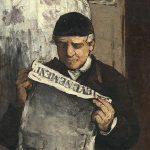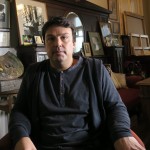Finding Vivian Maier is a documentary about a prolific, brilliant and mysterious photographer (1926-2009) who worked as a nanny for many different families over the years to finance her habit. It was only upon her death, and thanks to the efforts of a man she had never met or heard of, that anyone saw Ms Maier’s beautiful and moving photographs.
But, curiously, the film also becomes the story of that young man, John Maloof, a historian and photographer who collaborated with Producer/Director Charlie Siskel (who co-produced Bowling for Columbine) on the film. Maloof and Siskel want their documentary to be uplifting by showing us American and London galleries full of admirers, but its overarching tone is that of sadness and regret. The elusive Vivian Maier may have been odd, and less interested in showing her photos than in taking them, but Maier died penniless and alone while Maloof would inherit part of her posthumous fame and the profit from her photographs.
In fairness to Maloof, Maier’s photographs, and more significantly, the thousands of unprinted negatives she left in boxes, might never have come to light were it not for Maloof’s time, expense and determination. He tried to interest museums, the media and galleries, but problematically, photographs are only considered valuable works of art if they have been selected, processed and cropped by the artist.
Maier is in the process of developing all of the negatives and putting on shows, including in a village in France where Maier lived in her youth. No one knows why she severed her childhood bonds and protected her privacy so fiercely that most of her employers did not know she was a photographer.
Maloof was brought up by a struggling single mother on Chicago’s Northwest Side, and, since his formative years, has been rummaging through flea markets and thrift auction houses. It is at one such auction that in 2007, Maloof bid $380 for a box of historic photographs for a project he was working on.
He did not use the photographs as it happens, but was struck by their depth and humanity, humour and tragedy. He googled the name on the box and nothing came up. Two years later, his first clue came from a small obituary. He phoned a number attached to the article and ended up speaking with a man who not only recognised the name of Vivian Maier, but told Maloof that she had been his nanny.
In addition to exploring the places where she worked, Maier travelled the world by herself taking photographs wherever she went. When Maloof and Siskel visited her mother’s village in France, they learned that Maier knew her work was good, and had in fact attempted to get her photographs published.
Most of her former employers tell us that they, or their children, loved Maier, although when she took two children into the slaughterhouses to shoot the cattle awaiting death, and to the rough neighbourhoods to photograph the poor and homeless, they drew the line. One family offered to take her in when she returned to them after a long absence, distraught and homeless, but her increasingly odd behaviour made life with Maier a challenge.
One client surmises that ‘she was so creative, it must have been galling washing the floors.’ That she had a creative and compassionate eye is beyond doubt. And of course, the best part of the film is the photographs, which speak for themselves.
Joyce Glasser – MT film reviewer




